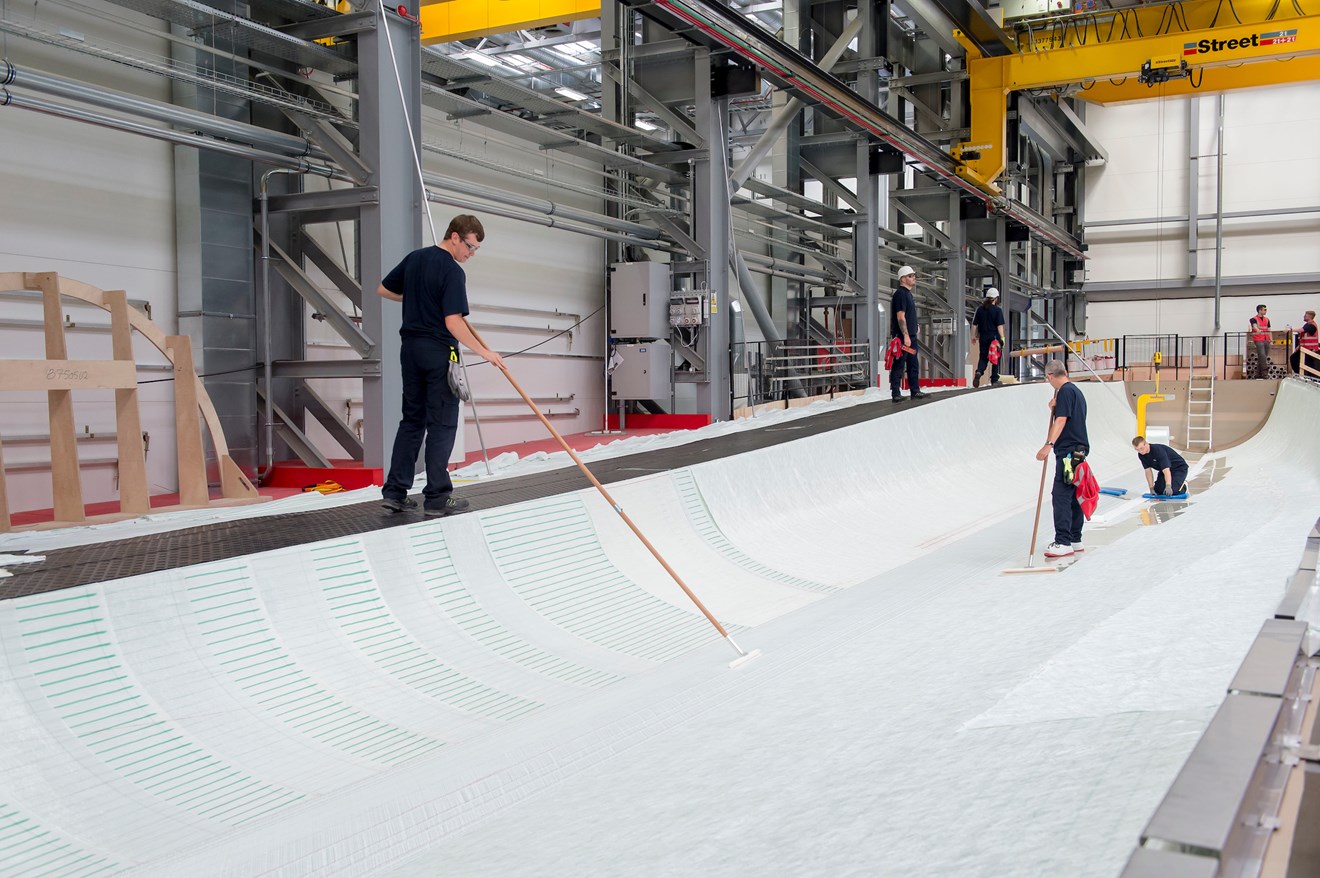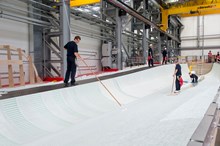The Challenge
Siemens Digital Industries (Siemens DI) successfully deployed industrial communications network solutions at Siemens Gamesa’s wind turbine blade factory at Green Port Hull.
The factory occupies an area equal to 7 football pitches, spread across 29 square miles at Alexandra Dock in the port city on the river Humber.
The factory, a £310m investment by Siemens and Associated British Ports (ABP), manufactures 75m blades for 7MW and next generation 8MW turbines, supplying to offshore wind farms located off the North Norfolk coast. These wind farm projects provide energy to nearly 400,000 UK homes annually.
When the IT and OT project was commissioned in 2017 its sheer scale and magnitude required meticulous planning, especially in the area of communications networks, considering the remote location, harsh quayside environment and size of the factory.
Two subsidiaries of Siemens, the integrated technology corporation, collaborated effectively to ensure that one of the most important components of setting up the factory - its communications network - was best in class.
“The site, a combination of brownfield and greenfield, was an exciting project to work on,” said Ian Poulett, Business Manager, Industrial Communications Networks, Siemens Digital Industries. “However, the location and its environment with its hot and dusty conditions was one of the major challenges.”
“The other challenge was the planned collaborative engagement of various divisions of Siemens and other service providers, including Atos IT infrastructure, which required us to be highly alert, ensuring all the wires were kept from getting crossed.”
The Solution
The Siemens DI team treated the project as they would with any of its clients carrying out one of its core functions, assessing the requirements with a site survey before implementation to ensure that the network is fully functional and has been fully tested to ensure it works and recovers as expected. Prior to this the team at Hull did the due diligence to understand what they needed to communicate with, what the coverage area needed to be, and the critically of the application. They also engaged IT and OT stakeholders to make sure all were on the same page.
“Faced with a bare construction site, there was a lot of work to be done. We studied the site plans and the operating requirements of the operations team. It was important to ensure there was a seamless integration between the IT and OT teams’ expectations,” added Poulett.
It was crucial that internet connectivity was not compromised, and the operations team needed to ensure that work would not be disrupted or halted. The manufacturing systems would equip the shop floor with 70 computers for engineers to work from. However, these computers could not remain fixed as the layout of the factory needed to adapt to meet production demands.
Siemens DI team deployed its Scalance range of integrated solutions to ensure efficient industrial networks and bus systems. A holistic approach to routing, security applications, remote access and industrial Wireless LAN played a key role in the smooth delivery of the project.
The Industrial Security with Industrial Security Appliances SCALANCE S range which comes with the highest industry security standard of IEC 62443 was used to ensure plant, system, and network security for the factory.
Similarly, Industrial Wireless LAN (IWLAN) solutions were used to guarantee maximum reliability and performance. The site needed flexibility without cables, secured real-time data transmission and more space in the control cabinet. The Scalance W range was used so additional features or ifeatures for the network could be activated via KEY-PLUG W700 iFeatures in selected devices in the SCALANCE W-700 range. These enable, for example, wireless real-time data transmission via PROFINET and PROFIsafe. It has a robust design and the devices come with industry standard IP65 protection class, which are designed for use in the most demanding applications under challenging environmental conditions, even for outdoor use.
Philip Scotson, Divisional IT Manager at Siemens Gamesa Renewable Energy Ltd, said, “We worked with the industrial networks communications team and put in place a combination of wireless and fixed-point access to ensure uninterrupted connectivity. This gave us flexibility and allowed the engineers to work from computers or remote devices from the Quayside open space and building towers.”
The Outcome
The collaboration between the two Siemens companies has created a 'plug and play' IT infrastructure which enables flexibility and scalability at the wind turbine blade factory.
The Siemens DI team networked 90 fixed access points throughout the factory and used IP rating weatherproof wireless connections throughout the premises. This allowed the computers to be plugged anywhere. The result: a truly plug and play modular factory scalable to demands of expansion was successfully opened in 2018.
“We will soon start production of 81m blades, and our factory is well equipped for further growth with a good back bone of IT infrastructure that allows us the flexibility to adapt to expansion plans,” added Scotson.
Following the success of this deployment, the same model was rolled out at other Siemens locations, including Congleton, Thameslink in the UK and at factories in Germany and Morocco.


